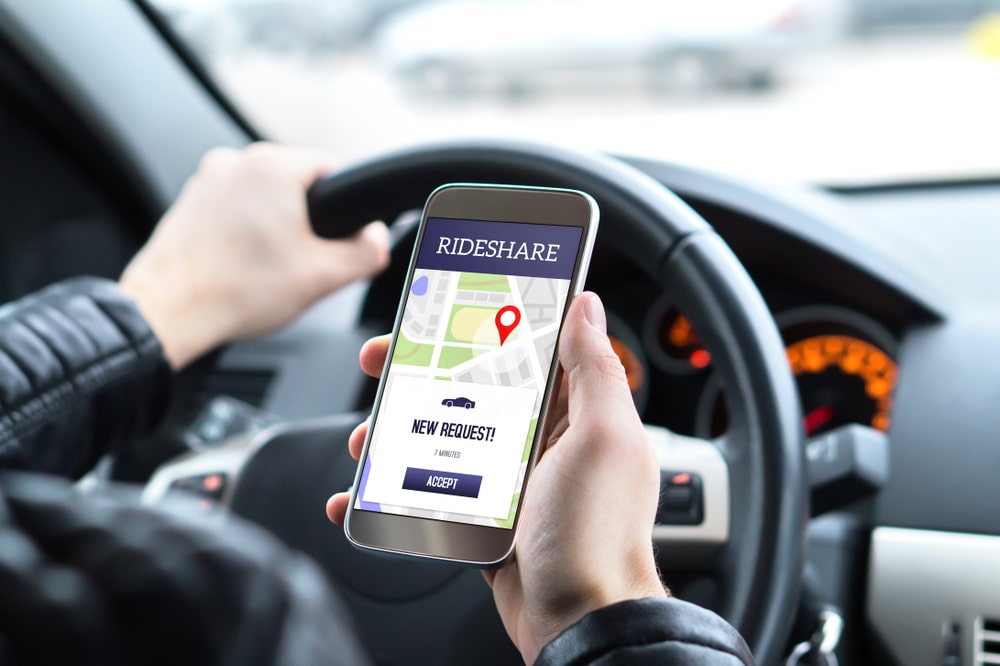Rideshare apps like Uber and Lyft are a convenient way for people to get from one place to another without having to drive or find alternative transportation. Though rideshare apps are intentionally simple to use, it is important not to forget that you are getting into a vehicle with a stranger, and you should take reasonable safety precautions.

Rideshare Facts and Statistics
Ridesharing apps have been around for over a decade, and their popularity is continually increasing. Over the last several years, states have worked to determine the best ways to regulate this method of transportation and keep passengers safe. Here are some recent statistics about this industry:
- In 2019 and 2020, 20 total fatalities and 3,824 sexual assaults were reported as having occurred on Uber trips;
- Between 2017 and 2019, Lyft received 10 reports of fatal physical assaults and 1,096 reports of sexual assault;
- Uber and Lyft are jointly responsible for about 14% of vehicle miles traveled in the U.S. each year;
- As of 2019, 36% of Americans used a rideshare service like Uber or Lyft, compared to half that amount in 2015; and
- The ridesharing industry is expected to grow by more than 115% between 2021 and 2026.
Both Uber and Lyft require background checks for their drivers, but safety precautions should still be taken, and these safety tips for Uber passengers and Lyft passengers are a good starting point.
Safety Tips Every Rideshare Passenger Should Know
Here are some easy-to-follow tips for every trip to help increase your probability of a safe ride.
Check Your Surroundings
Before you even call your rideshare ride, make sure you are in a safe location to wait. It is generally a good idea to secure your ride while you are inside a safe location and wait to step out until the vehicle is close by. Depending on where you are, it could be only a minute for your ride to arrive, or significantly longer. This is the only one of our safety tips for Lyft riders and Uber passengers that takes place before you open the app.
Share Your Trip
Both Uber and Lyft have an option on the app for you to “share your trip”, which allows the person you are sharing with to see your route and progress. If anything happens along the way, this will help them locate you quickly. For Uber, this is called “share trip status,” and for Lyft, you will choose “share trip details.”
Verify the License Plate
This is one of our simplest and most important safety tips. A lot of cars look alike even if they are not the same make and model. The rideshare app will provide information about the driver and vehicle, including the license plate number. Check to make sure the plate on the vehicle you are getting into matches the one on the app. This is especially important in places like airports or concert venues where there are likely large volumes of people requesting rides.
Speak to the Driver
It is important to make sure your driver is legitimately there to provide the ride secured on the app. Greet them from outside and either ask their name or wait for them to ask yours. Do not ask, “Are you Joe?” This makes it too easy for them to lie. Make them say the correct name to ensure they are, in fact, your driver. If you get a creepy feeling about the driver, do not hesitate to walk away and cancel the ride. Your safety is the most important thing, and this is one of the safety tips that should be routine.
Sit in The Backseat
Having distance between yourself and the driver can reduce the risk of any physical contact, and it is also good rideshare etiquette. Generally, passengers sit in the back unless sharing a ride that requires the use of the front passenger seat to fit everyone in. From the backseat, you can also see the driver clearly and make sure they are not doing anything out of the ordinary.
Buckle Up
It is still your responsibility to obey traffic laws as a passenger, which means buckling up. Whether you are in a rideshare vehicle or your personal vehicle, buckling up could minimize your injuries if an accident occurs.
Don’t Get Too Personal
When it comes to safety tips every rideshare passenger should know, this may be one of the least well-known. There is no reason not to have a conversation with your rideshare driver. They often have plenty of stories to share or suggestions about places you may want to go. But make sure that you do not share too much personal information, such as where you live, what days you will be out of town, or any other information that can make you easily traceable after the ride.
Call for Help
Uber and Lyft both have features on the app that give you the ability to call 911 directly from the app, allowing emergency personnel to see your location and the details of your trip. Using this feature could make it easier for authorities to locate you even if you are not sure exactly where you are.
Contact An Attorney
If you have found yourself in a bad situation with a rideshare driver and experienced harm, you may be entitled to compensation. The award-winning team of Uber & Lyft accident attorneys at O’Connor, Parsons, Lane & Noble, LLC, is here to make sure you understand your legal rights and do not settle for less than what you are entitled to. Taking on rideshare companies like Uber and Lyft is often much more complicated than other vehicle accidents. We are here to help. Contact us to schedule a case consultation.
